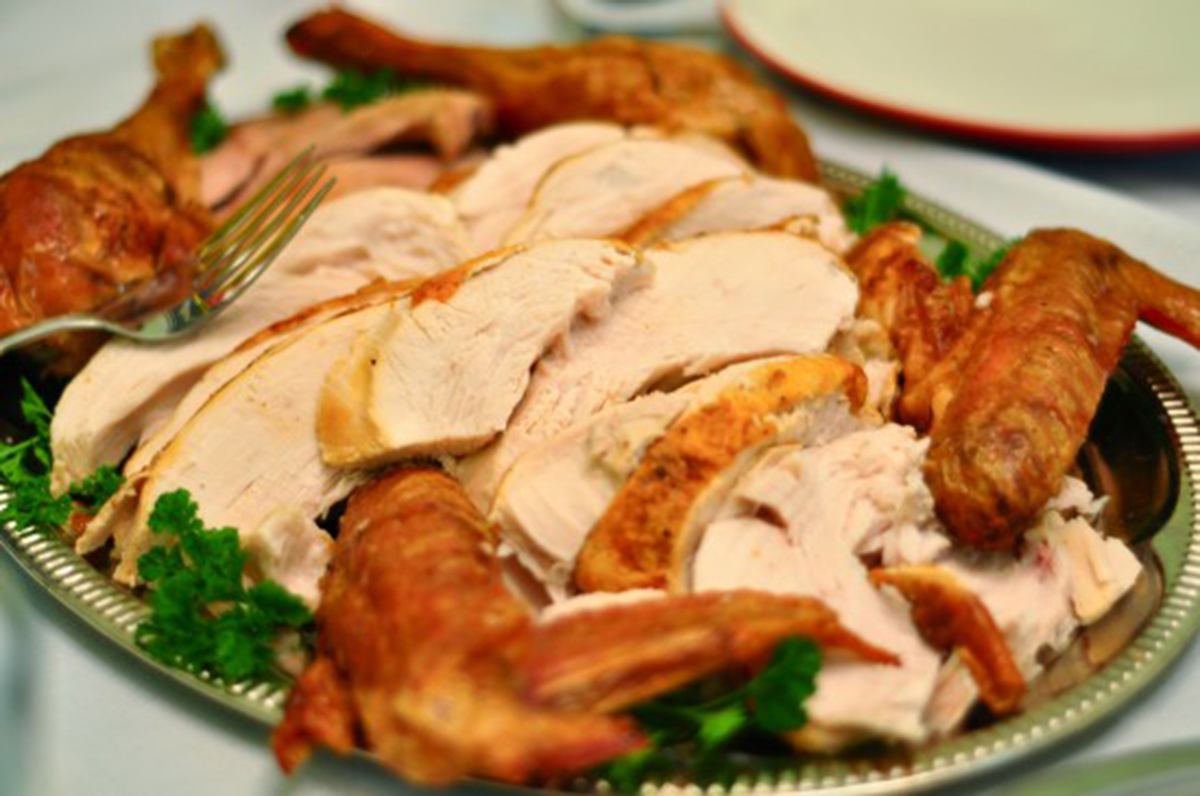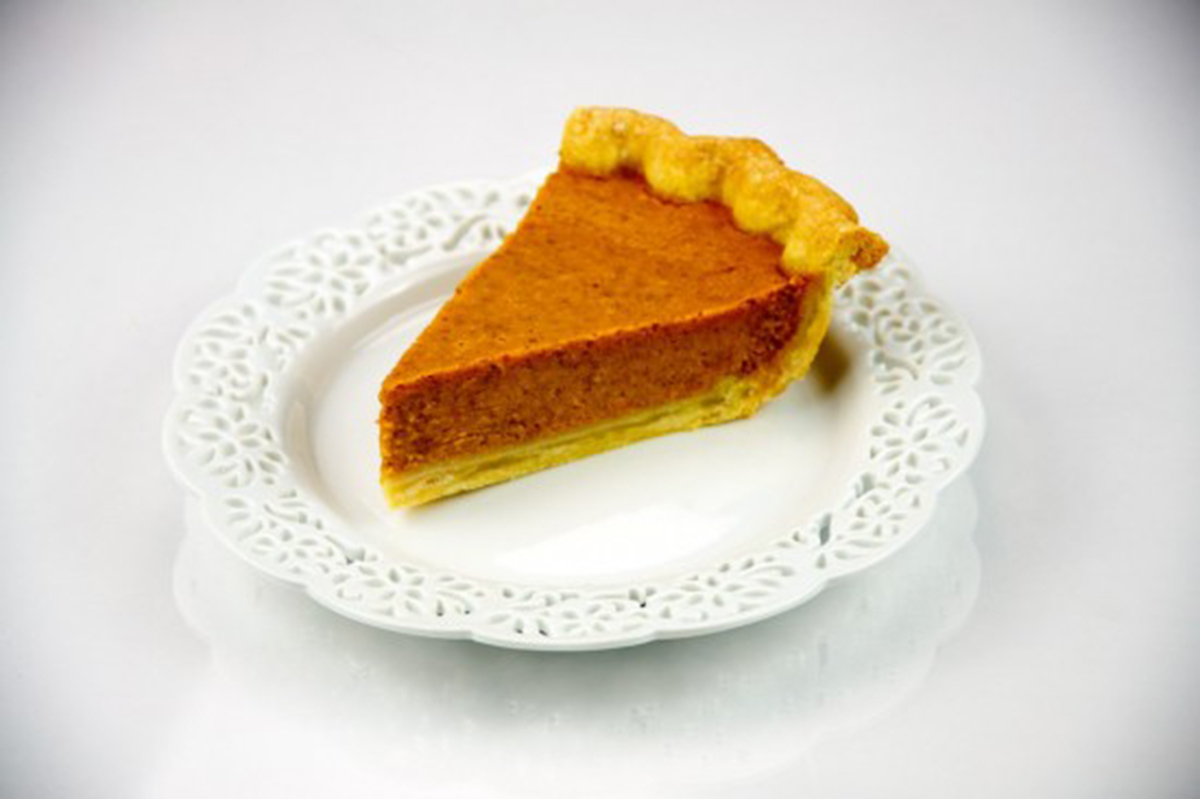Thanksgiving is a tough time for dieters, and it's especially tough for paleo dieters -- although it doesn't have to be. The foods most Americans eat every November (and most Canadians eat every October) are basically paleo-friendly. They just need to be prepared in a different way. Let's start with the main course, the Thanksgiving bird.

Making Your Meal On Turkey
At first glance, there wouldn't seem to be any problem with the roasted turkey on the usual Thanksgiving table for paleo and primal dieters. After all, turkey is meat. The fat is a little high in omega-6 fatty acids, but if you are otherwise sticking to your diet, there isn't enough in the white meat to cause any serious problems.
Read More: The Truth About Paleo Diets
Here's a helpful hint. If you live in a part of the United States where the weather is still warm at Thanksgiving (that's a large part of North America), and your hosts are serving iced tea, drink up. Either Orange pekoe or green tea, iced or hot, helps you feel fuller sooner with your meal. Water doesn't have the same effect, because it's not the fluid in your stomach that makes you feel full, but rather a combination of phytochemicals in the tea. Regular and decaf both have this effect.
(If you are curious what this evidence actually is, it's in research regarding the involvement of central cholinergic mechanisms on sodium intake induced by gabaergic activation of the lateral parabrachial nucleus.) Many cooks do brining (brief soaking in salt water) anyway to make sure the turkey is tender. This just also helps people who eat the turkey feel full.
Paleo- and Primal-Friendly Stuffing
The issue for most people sticking to any kind of low-carb diet when Thanksgiving turkey is being passed around is what to do about stuffing? Many primal and paleo fans decide to chuck their diets and eat this emotionally charged comfort food, citing some kind of 15% or 20% rule that allows cheat meals. If that's what you need to do, OK.
But if you are preparing the stuffing for the turkey, or if you know you are having paleo dieters over for dinner and you want to accommodate their preferences, try these alternatives to white bread and cornbread:
- Mushrooms.
- Sausage.
- Nuts and fruit.
But be aware that if you decide to break your own rules and load up on traditional stuffing, your body won't send you any signals that something is out of balance right away. It typically takes 3 to 4 days, not just 1, for paleo dieters to start feeling differently after indulging in a super-caloric, carbohydrate-laden meal. You won't feel queasy on the Friday after Thanksgiving. It's more likely to be the next Monday.
Paleo- and Primal-Friendly Desserts
For most North Americans, the traditional dessert for Thanksgiving is pumpkin pie, preferably with lots of whipped cream, thank you. Pumpkin isn't a terrible food for paleo or primal dieters until you start adding the condensed milk and sugar to make the pie filling. That's considerably more problematic for most than the crust.

But if you are going to create a Thanksgiving indulgence for carbohydrate-conscious Thankgiving dinner guests, consider making the crust with chopped nuts or almond flour instead of wheat flour. Everyone may like the taste better.
Read More: Safe Starches On A Paleo Diet
As you will see in the recipes to which we link below, it's possible to make a tasty sweet filling with maple syrup and/or honey as the sweetener. Maple syrup and honey really do count as sugar, but they have their own virtues:
- Maple syrup has a glycemic index of 54, which is about half that of regular sugar. It also contains calcium, iron, and manganese, and is relatively low in fructose.
- Raw honey has a glycemic index of 30, largely due to the fact that the bee's digestive process turns other sugars into fructose and dextrose. The fructose in honey can actually be beneficial, stimulating your liver to process other sugars, as long as you don't consume more than about 10 grams. That allows you to eat one large piece (maybe 1/6 rather than 1/8) of a honey-sweetened pie, but just one, sorry.
And what about the rest of the traditional Thanksgiving meal?
Here are some low-carb fixes that everyone at the table may enjoy:
- Serve your appetizers on crackers made with almond flour. Or serve stuffed mushrooms.
- Make a fruit tray with apples and and Asian pear slices served with dried cranberries, dried cherries, nuts, and plantain chips.
- Serve an antipasto tray with salami, mozzarella, sliced red peppers, olives, pickles, onions, and cucumbers.
- Eat the same salad every year? Try do it yourself primal-friendly salad dressings from Mark Sisson that we have linked below.
- Make a topping for sweet potato casserole from coconut, coconut oil, cinnamon, and maple syrup, with chopped walnuts for crunch.
- Serve lingonberries with or instead of cranberries. They have an interesting flavor that doesn't require as much help from sugar.
- Use cauliflower (be sure to remove any green leaves before boiling) as a substitute for potatoes or rice.
- Make liberal use of coconut and nuts in your desserts. Coconut macaroons are relatively low-carb and paleo- and primal-friendly.
- Bray GA, Flatt JP, Volaufova J, Delany JP, Champagne CM. Corrective responses in human food intake identified from an analysis of 7-d food-intake records. Am J Clin Nutr. 2008 Dec. 88(6):1504-10. doi: 10.3945/ajcn.2008.26289.
- Josic J, Olsson AT, Wickeberg J, Lindstedt S, Hlebowicz J. Does green tea affect postprandial glucose, insulin and satiety in healthy subjects: a randomized controlled trial. Nutr J. 2010 Nov 30. 9:63. doi: 10.1186/1475-2891-9-63.
- Photo courtesy of Kimberly Vardeman by Flickr : www.flickr.com/photos/kimberlykv/5216035895/
- Photo courtesy of TheCulinaryGeek by Flickr : www.flickr.com/photos/preppybyday/5076305261/


Your thoughts on this